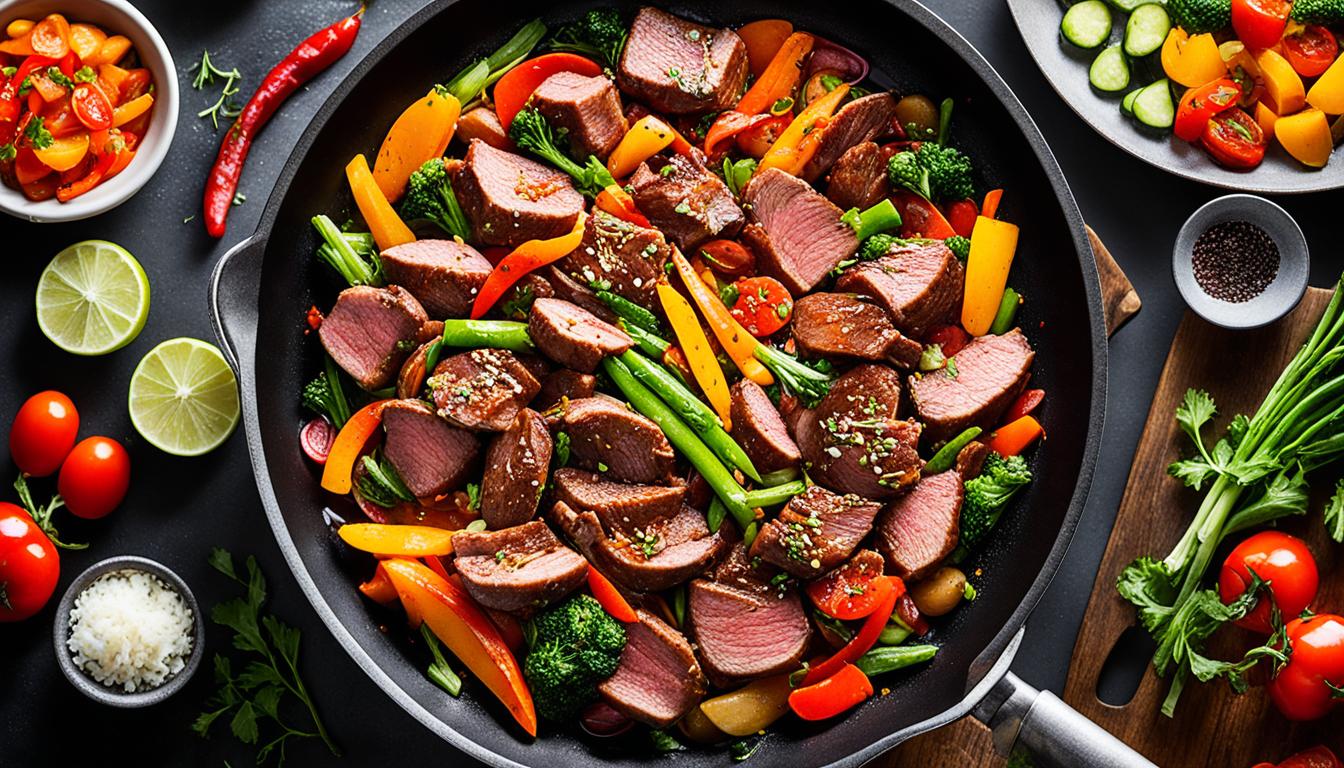Have you ever wondered how to achieve the rich flavors of homestyle cooking using a wok? Or how to braise perfectly with this versatile kitchen tool? Whether you’re a seasoned chef or an aspiring home cook, mastering the art of wok braising can elevate your culinary skills and create mouthwatering dishes for any occasion.
In this article, we’ll explore the unique characteristics of wok braising and uncover the secrets behind its popularity in homestyle cooking. We’ll also share expert tips and techniques to help you braise like a pro and unleash the full potential of your wok. So, are you ready to discover the true power of wok skills and transform your cooking?
Join us as we dive into the world of wok cooking and unveil the secrets to achieving tender, flavorful meals that will delight your taste buds and impress your loved ones.
The Advantages of Braising in a Wok
Braising in a wok offers several unique advantages that make it a preferred cooking method for many chefs and home cooks. The high heat capabilities of a wok allow for superior searing of ingredients before adding the liquid, resulting in enhanced flavors and textural contrasts in the final dish.
When searing ingredients in a wok, the intense heat caramelizes the surface, creating a deliciously rich and flavorful braise. This searing process locks in the natural juices and develops a beautiful color, adding depth and complexity to the dish.
Furthermore, the wide surface area of a wok promotes faster reduction of sauces during the braising process. As the liquid evaporates, it thickens and intensifies, resulting in a concentrated and luscious glaze that coats the ingredients.
Sauce Reduction in Wok Braising
In wok braising, the rapid reduction of sauces allows for a quicker cooking time compared to traditional Western braising techniques. This makes wok braising a fast and efficient cooking method, perfect for busy households or when time is of the essence.
Unlike slow-braising techniques that may take hours at lower temperatures, wok braises can be ready in a fraction of the time. It’s important to note, however, that most wok-braised dishes are not cooked for long periods, which may limit the breakdown of connective tissues in meat compared to a traditional long braise.
Lastly, while woks are excellent for quick and intense cooking, they are not designed for long, slow simmering like Dutch ovens or clay pots. If you’re looking to achieve a more traditional long braise, it’s recommended to use a different vessel that can better withstand prolonged cooking times.
So, if you’re seeking the advantages of searing ingredients to perfection and reducing sauces quickly, braising in a wok is the ideal choice. It offers a faster and more flavorful method of braising, resulting in delicious homestyle meals with ease.
Tips for Braising in a Wok
When braising in a wok, we have some valuable tips that can help you achieve the best results. To save time and improve the final dish, pre-cooking certain ingredients like beef shanks or tofu can make a significant difference. Creating an aromatic base with ingredients such as ginger, soy sauce, or fermented tofu adds depth of flavor to your braise.
Getting the right liquid balance is crucial for achieving the desired consistency and taste. Whether you prefer water, broth, soy sauce, or a mixture of condiments, it’s all about finding the right combination. By keeping the wok simmering uncovered, you’ll notice a noticeable reduction in liquid and the development of a rich glaze, making your dish even more flavorful.
Having the right tools is essential for successful wok braising. A wok spatula, hoak, wire-mesh or metal spider, perforated skimmer, and lid can drastically improve your cooking experience. These tools ensure smoother and more efficient cooking, allowing you to fully explore the art of braising with a wok and create delicious homestyle dishes.
